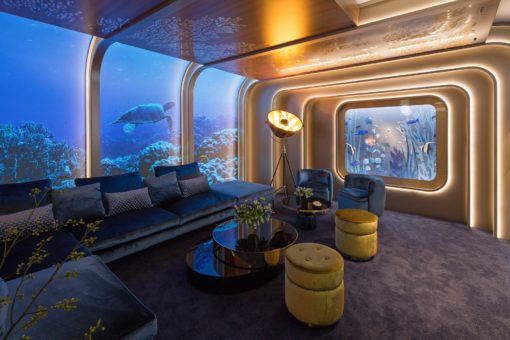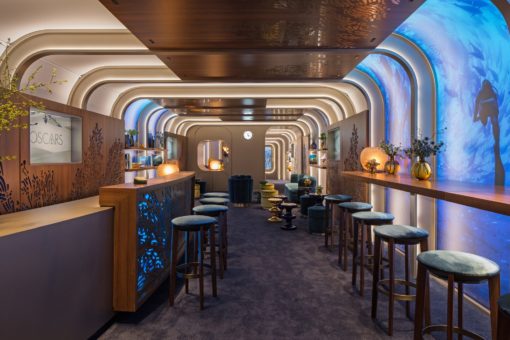There aren’t too many equalizers in today’s stratified society; in fact, one can say that the act of waiting is the only inconvenience that’s shared by everyone, rich and famous, or poor and anonymous. Consider a traffic jam on the Santa Monica Freeway; the CEO in the 2019 Porsche has to sit and smolder as much as the day laborer in a 1996 Toyota Corolla. But that’s where the kinship ends, because what separates the two is where the waiting happens; it’s obviously more comfortable in the high-end ride than a plebeian jalopy.

Rolex Greenroom, photo courtesy Rolex
It’s not a great conceptual leap to apply this hierarchy to waiting rooms, specifically those known as “greenrooms”, where entertainers relax before and after their onstage appearances. Naturally, the higher the celebrity status of the occupants, the higher the comfort level provided to them. So, when the Oscars® began considering the design of the 2019 awards ceremony, it turned to the famous watch manufacturer Rolex™, a company that since 2016 has been responsible for the design of the most famous waiting room of all. According to Arnaud Boetsch, Rolex™ Director of Communication and Image, this year’s “Greenroom theme is a celebration of the underwater world, one that Rolex™ is seeking to help protect through its Perpetual Planet commitment.” Excuse me? As admirable as this “celebration” is, it’s hard to reconcile the so-called perpetual nature of the Rolex™ Greenroom with the fact that the entire structure was built for one event only, much like its movie set counterparts. Now the Oscars® are over, it’s a safe bet that the Rolex™ Greenroom is filling a dumpster in the basement of the Dolby™ Theatre. Apparently, Perpetuity ain’t what it used to be…

Rolex Greenroom, photo courtesy Rolex
Yes, but what a Greenroom it was; expertly designed to give guests the illusion that they are in “a vessel looking out through portholes to a world governed by the denizens of the deep,” the room “offers a version of the sea as we imagine it: a mysterious world apart.” Which pretty much sums up the relationship between the TV audience and the equally “mysterious world apart” of the movie stars. After all, when you get right down to it, the Oscars® are fundamentally a moving-image version of Star™ Magazine; you just don’t have to wait in line at Ralphs™ to enjoy it. So, as the commoners on the couch at home root for their favorite film, the Elect get to wait it out in “furniture that evokes the soft shapes of waves and starfish.” Which is as it should be; but even in this room, designed to neither engage nor enrage, the celebrities in transit are needlessly offered coffee table books on beachcombing and distinctly non-Davy Jonesish flower arrangements. Ultimately, these tchotchkes clutter up a joyless space designed to be spectacular yet attract no attention; but that’s OK if you’re only worried about not blowing your lines onstage.

Rolex Greenroom, photo courtesy Rolex
But what’s ultimately perplexing is why Rolex™ thought that their greenroom would have any effect at all on the despoiling of the planet’s oceans. In fact, it’s mind-numbing that they used environmental issues to promote their brand. Sure, Rolex™ watches were strapped to James Cameron’s deep-sea submersibles and made it to 40,000 feet deep, yet “kept perfect time and emerged from the water unscathed.” That’s great; once again, Mother Nature’s intentions are thwarted by human industry. But don’t worry about it, Ishmael; find Nemo, it’s time to hand over the award.


